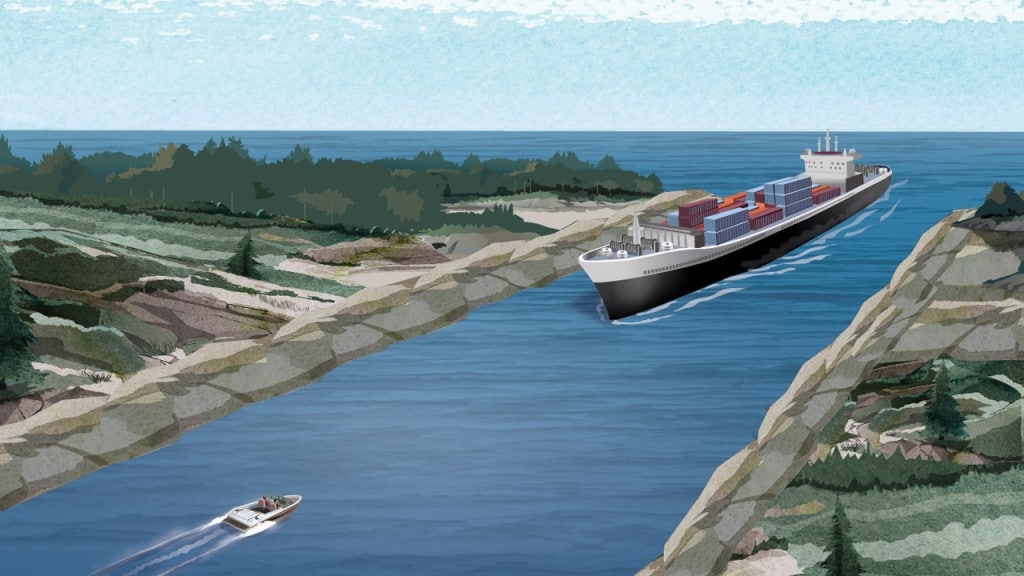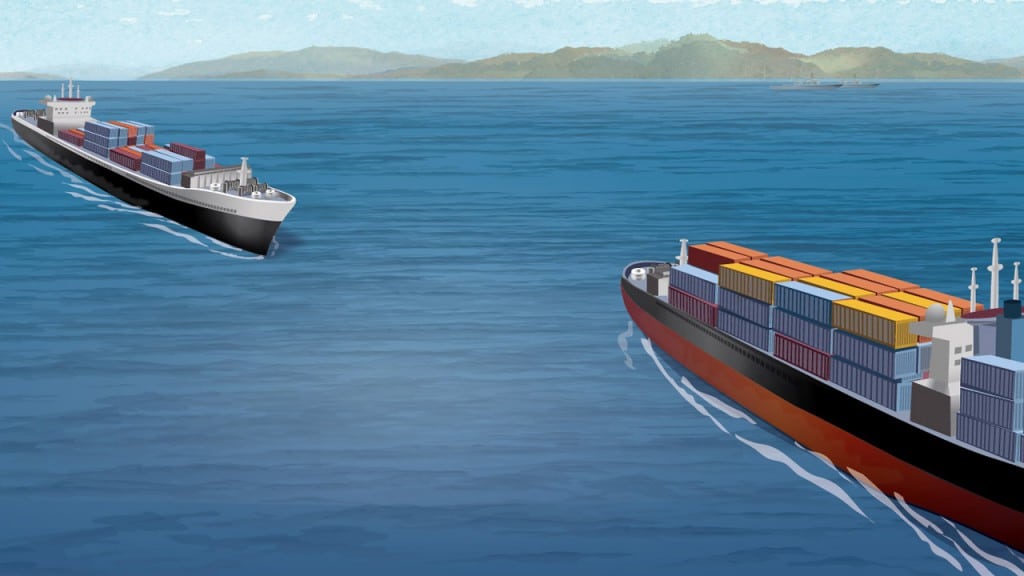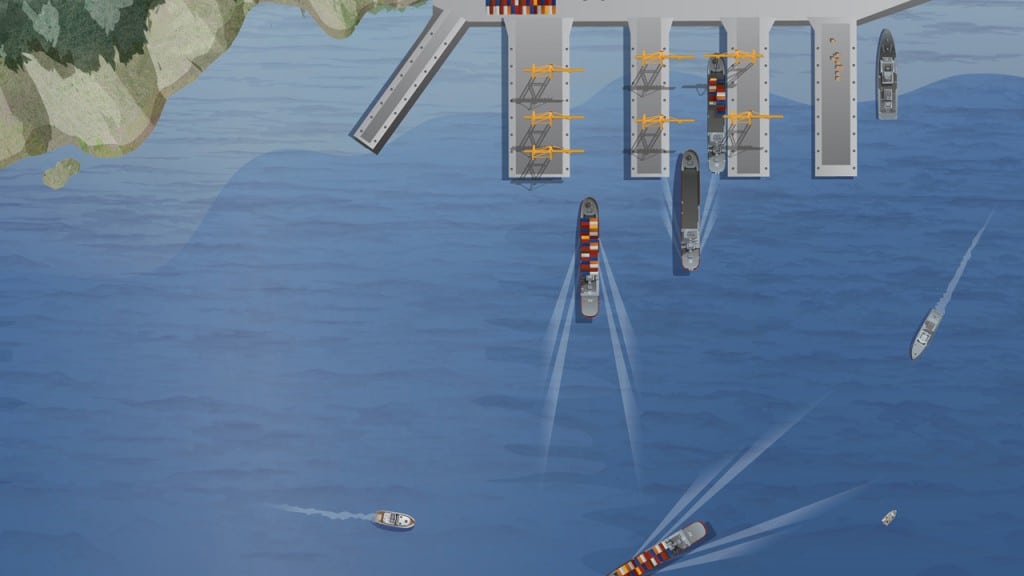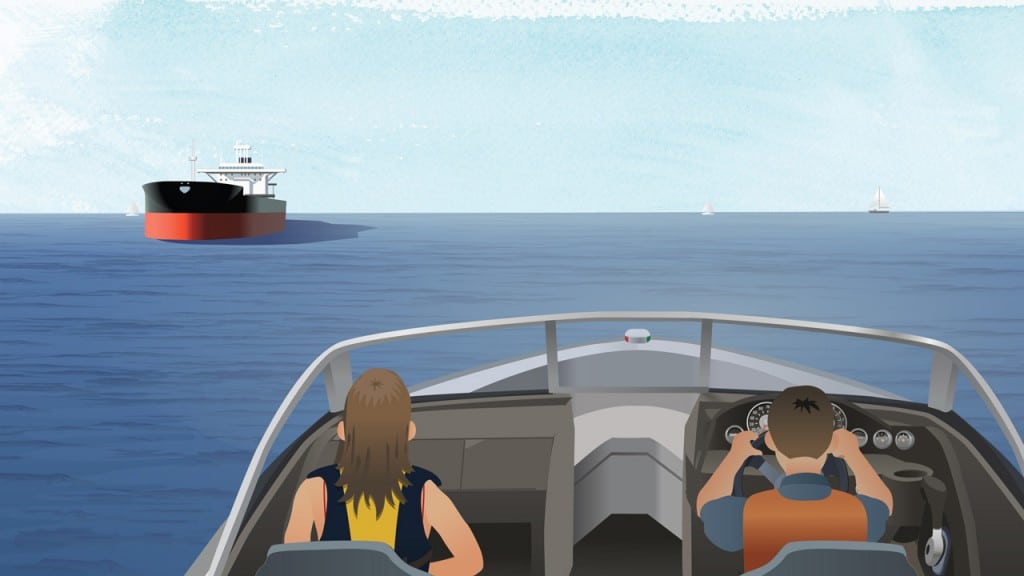River Navigation
Boating in rivers is different than operating on an open waterway. Boating in rivers presents its own unique hazards and conditions. Some rivers may exhibit strong currents, which can affect your boat’s steering and the predictability of your craft.
The water level in a river may also rise or lower more rapidly than an open waterway–exposing trees, rocks, sunken islands and other hazards. Always watch for these types of hazards and the navigation aids that may indicate their position.
Remember:
When boating in rivers, and approaching a blind turn or a narrow channel, always keep as far to the starboard (right) side of waterway as is safe. Power-driven craft and sailboats less than 20 m in length must give way to less manoeuvrable crafts while navigating on a river.
If two vessels approach each other in a narrow channel where tide, river flow, or underwater features create dangerous currents, then the vessel going downstream is automatically afforded the right-of-way.
Canal Navigation
Canals are man-made waterways. A canal is typically narrower than a channel, and differs from a river as the depth of the water can be controlled.
You should always keep to the starboard (right) side of a channel, particularly when approaching oncoming traffic or entering a blind turn. Power-driven craft and sailboats less than 20 m in length must give way to less manoeuvrable crafts operating in a canal or shipping lane. Keep in mind that large vessels, such as commercial ships, are often restricted in their ability to manoeuvre in narrow channels and pleasure craft operators should steer well clear.
There are a number of activities that are prohibited while in a canal:
- No excessive noise between 11 pm and 6 am
- No mooring a vessel to a navigation aid
- No fishing within 10 m of a lock or from a bridge that passes over a navigation channel
- It is illegal to dive, jump, scuba-dive, swim or bathe within 40 m of a lock, gate or dam
Safety around dams
Use caution when near canal dams where currents and undertows can be dangerous. Steer well clear of dams and adjust your course to avoid strong currents near dams, especially when operating a small craft.
Shipping Lanes
The Collision Regulations require that boaters be aware of shipping lanes (traffic lanes) and use extreme caution when near vessel traffic lanes. Large commercial ships often cannot see small pleasure craft operating ahead of them from the bridge. You should always proceed in the appropriate traffic lane in the general direction of traffic flow for that lane. Boaters should join or leave a traffic lane at its termination, but when joining or leaving from either side you should do so at as small an angle to the general direction of traffic flow as practicable.
You should avoid crossing traffic lanes but if you must, cross at a right angle to the general direction of traffic flow. If navigating near a shipping lane or near the termination of a shipping lane you should use caution and avoid the lane with as wide a margin as practicable. Always avoid anchoring in a shipping lane or near its termination. To increase your visibility to larger vessels in or near a shipping lane, you should stay in groups with other small boats, if possible.
Less Maneuverable Vessels
When operating in the vicinity of large commercial vessels, remember that these vessels have limited visibility, turning and stopping capabilities.
The Collision Regulations require that all smaller pleasure craft less than 20 m in length (including sailboats) must give right-of-way to larger, less manoeuvrable vessels. This is one of a few instances in which a motorized vessel has the right-of-way over a non-powered vessel.
Large vessels, those towing a barge and those engaged in fishing activities with nets and trawls always have the right-of-way and are considered to be the stand-on craft. Pleasure power boats and sailboats must take early and substantial action to stay well clear of these types of vessels.
Remember:
The Collision Regulations require that pleasure sailing craft and those power-driven vessels less than 20 m in length shall not hinder the passage of power-driven vessels which can safely navigate only in a narrow channel or those craft that are navigating in a traffic lane.
Navigating at Sea
Boaters are required to follow the International Regulations for preventing collisions at sea and the Canadian modifications upon the high seas and in all waters connected therewith and navigable by vessels as described in the Collision Regulations Rules 1 and 2 and the Canada Shipping Act, 2001 Section 562. For more information visit www.tc.gc.ca.
When traveling to the United States by sea or inland waterway, Canadian citizens are required to present a single document that complies with the Western Hemisphere Travel Initiative (WHTI). These requirements came into effect on June 1, 2009. Boaters should check with the U.S. Department of Homeland Security for up-to-date requirements.






